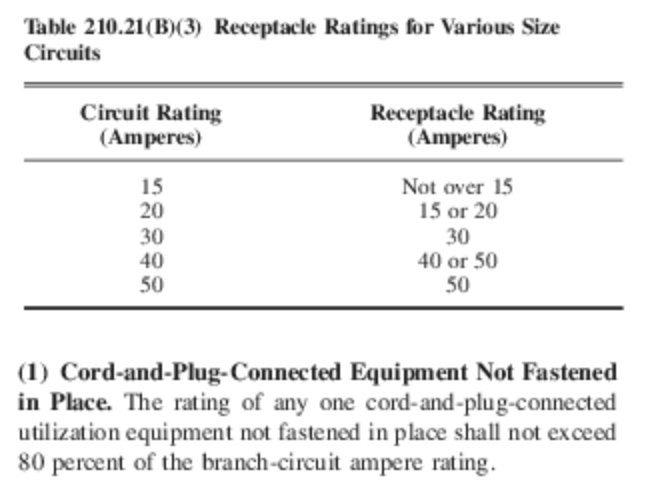Jadnashua
Retired Defense Industry Engineer xxx
If I understand it correctly, you should not use a 20A receptacle on a 15A circuit ? But, what about say a dryer circuit that has a 50A receptacle...If what you intend to plug in there only calls for say 40A, would it be okay to use wiring and a 40A CB, or, does code require it to support 50A because the receptacle will allow some other device that may need that amount of power? If the thing required 50A, and the wiring and CB were 40A rated, you probably wouldn't burn anything down and the CB would eventually trip, but does that meet code?
Question comes up, and I know manufacturer's instructions must be followed, too, if you have say an EVSE rated at 32A, but comes with a 50A plug on it...what must the wiring and receptacle be rated at?
Some manufacturers call for a 50A circuit when there's a plug involved, buying the same unit, 40A if hardwired. Some don't specify, but say it must be installed by a licensed electrician. What does the code say about this situation?
Question comes up, and I know manufacturer's instructions must be followed, too, if you have say an EVSE rated at 32A, but comes with a 50A plug on it...what must the wiring and receptacle be rated at?
Some manufacturers call for a 50A circuit when there's a plug involved, buying the same unit, 40A if hardwired. Some don't specify, but say it must be installed by a licensed electrician. What does the code say about this situation?


